Estimated reading time: 10 minutes.
April/2017 – The E 55-210mm f/4.5-6.3 OSS introduced in late 211 is a standard-telephoto zoom lens made for Sony’s E-mount mirrorless cameras. A companion to the E 18-55mm f/3.5-5.6 OSS, or any recent alternative like the E 16-50mm f/3.5-5.6 PZ OSS, the idea is to offer an entry level kit from 18mm, great for landscapes and tighter spaces, up to 210mm, for portraits, sports, and wildlife; in just two lenses, featuring Sony’s premium approach to its Alpha line. In order to be small the SEL55210 takes some questionable decisions over its maximum aperture (f/6.3), and reach (just 210mm, shorter than the DSLR usual 250mm), meaning less light coming into the camera, partially compensated by the Optical SteadyShot (OSS); the built-in stabilizer for up to 4-stops. At just US$348, the SEL55-210 is a forgotten gem on the Alpha lineup, bringing together the longer reach, the OSS and the low price to Sony’s E-mount. Is it worth your kit? Let’s find out! Nice reading.

At 10.6 x 6.2cm of 345g of mostly plastics and metals, the E 55-210mm f/4.5-6.3 OSS build is nice for its price, certainly a step ahead most “standard-telephoto” APS-C zooms on the market. While the Canon EF-S 55-250mm f/4-5.6 IS only got dignified on the 2014 STM generation, this 2011 Sony delivered a solid plastic tube four years before it, a time when nobody cared about the now-defunct NEX cameras. Today when it’s a commercial success, it made sense to keep its premium appeal on even the simplest E-mount lenses, with light, plastic barrels with smooth zoom operation, covered with a shiny metallic finishing; perfectly matching the Alpha’s “consumer electronic” design. Sony’s commitment to the “premium” APS-C experience is notable, building a high quality product lineup using the smaller format while Canon and Nikon downgraded in mostly for entry-level cameras.
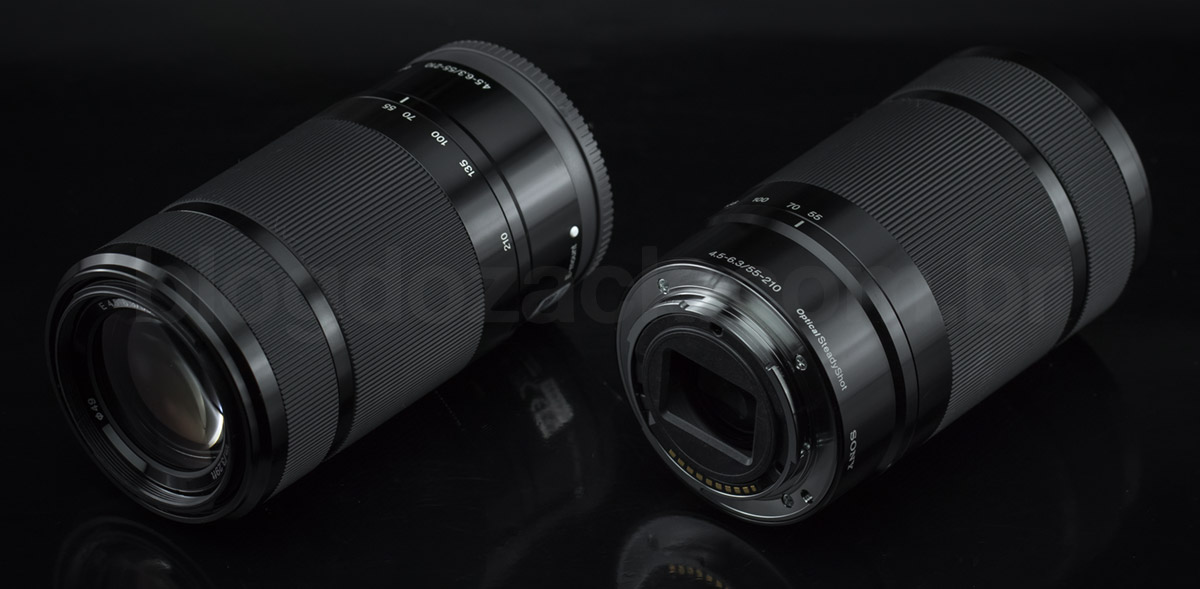
In your hands the usability is mixed, as we can’t unfortunately bend the laws of physics. While the zoom operation is made using an enormous 6cm rubberized ring, incredibly quiet and smooth, it’s impossible not to notice the E 55-210mm weird ergonomics when mounted on the camera; given it’s extra 4.5cm when extended (15.1cm at 210mm). Make no mistake: an A6500 + SEL55210 kit is a fraction the size of an EOS 60D + EF-S 55-250STM, but it looks comical for everyday shots, completely missing the point of a mirrorless camera. That made precious Sony’s decision to cut the lens weight using high quality plastics on the barrel, perfectly balancing with every all-metal Alpha, not feeling front heavy. The E55-210 surely won’t fit your shirt’s pocket, and asks for some “commitment” when it’s time to shoot at telephoto distances.
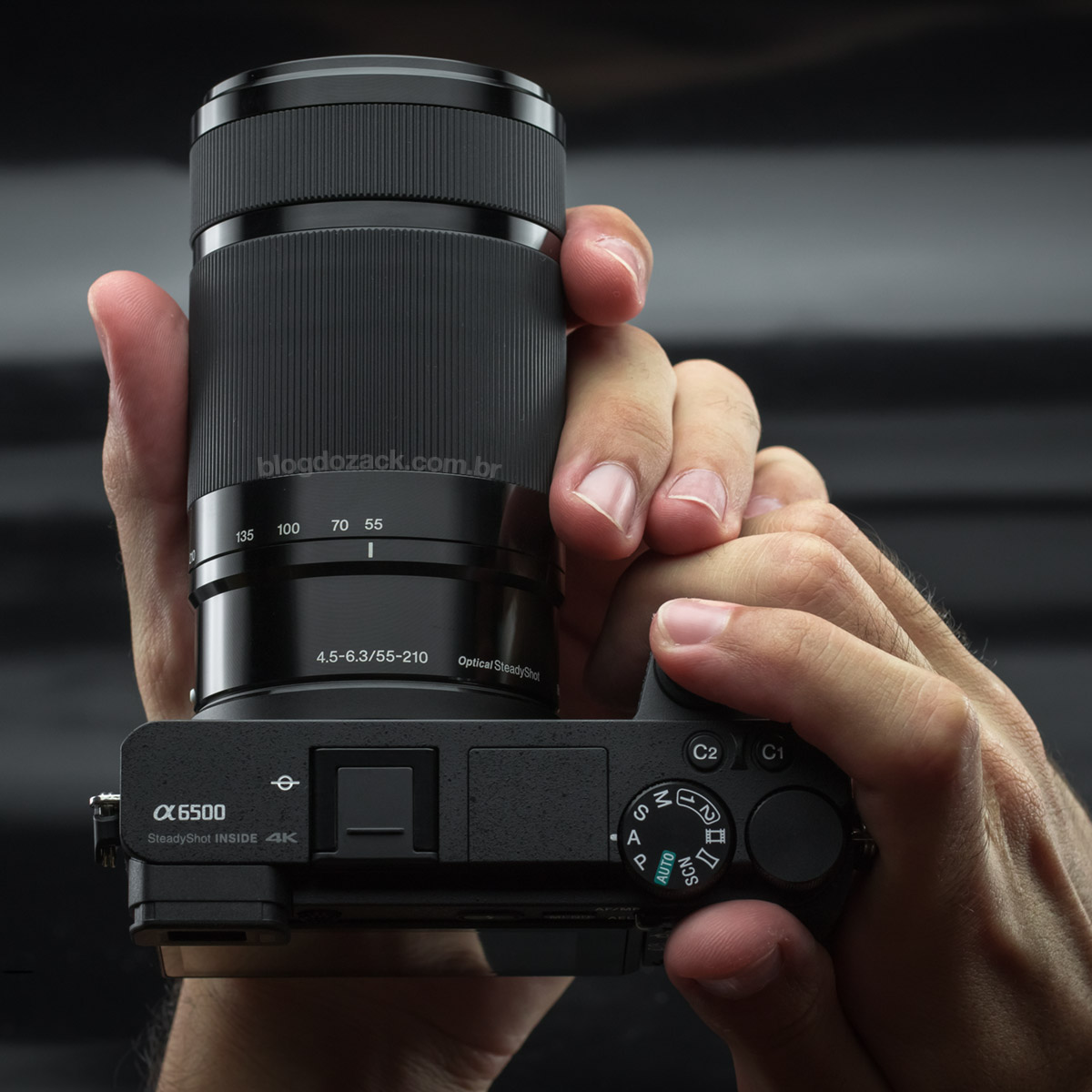
At the front the rubberized manual focusing ring repeats the same usability found on all E-mount lenses: no buttons nor physical switches, with virtual controls on the camera’s interface. The AF and OSS must be set on the camera’s menu, that depend on each model; asking for some of the photographer’s patience. Mounted on the A6500, Sony’s top-of-the-line APS-C Alpha, we have to search tab after tab for even basic adjustments, spreading over confusing menus that takes away any agility to the controls. However its using a linear auto-focus motor, absolutely quiet and smooth, allowing for the “dynamic manual focus” (DMF) on the focusing ring, dubbing as a standard “full time manual”; sort of. After locking focus (but not before it), one can further adjust the focusing position using the ring, not switching any menu settings; a life saver in decisive moments, greater for precision when shooting landscapes and product photos.
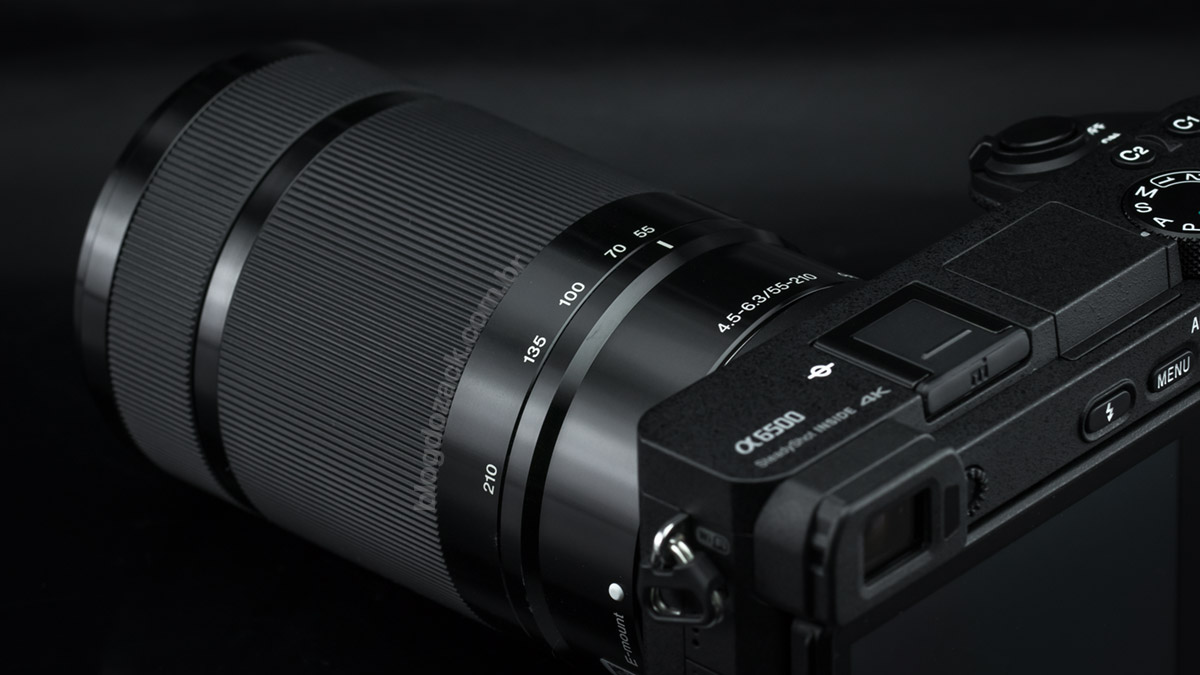
Auto focusing is a headline of this lens. Bought exclusively to test Sony’s A6300 4D Focus capabilities, the 55-210mm can deliver moments of brilliance; but only if the camera and the photographer make a good job. On the A6300 tests, with a single subject moving straight to the camera, the E55210 made almost full sequences in perfect focus, with an about 80% focusing rate. It’s interesting to see how effortlessly the linear motor drives the focusing group, that can “lock” on the correct subject at the blink of an eye; it’s very quick! But on complicated tests with the A6500, the E55210 got confused with various subjects coming in the camera’s direction, and the 4D Focus often missed the subject; dropping the focusing rate significantly. So a good technique is mandatory: select a limited area on the camera’s interface, and then 4D Focus can effortlessly follow your subject’s movement, over time, for continuous sequences in sharp focus.

“BMX” com a A6300 + E 50-210mm f/4.5-6.3 OSS at f/6.3 1/4000 ISO1250 @ 210mm; a complete Hi+ 22 raw capture.
Inside the SEL55210 Sony also implemented the Optical SteadyShot OSS, that promises up to 4-stops of compensation; easily delivered by this lens. It’s impressive how it performed during my tests, much better than the also OSS E 50mm f/1.8; both tested on the A6500, that feature the built-in SteadyShot. With such camera, Sony promises up to 5-stops of compensation, something the SEL50F18 failed to delivered (it could barely compensate for 3-stops). But the SEL5210 easily surpass long exposures as low as 1/10 of a second, not even asking much from the photographer’s posture: 1/320 (0EV), 1/160 (1EV), 1/80 (2EV), 1/40 (3EV), 1/20 (4EV) and 1/10 (5EV); perfect to lower the ISO after the sun sets. However during video recording the OSS was as bad as the 50mm prime, creating a small jitter during 4K capture on the A6500. It’s so severe the details suffer from some “jello effect” due to the rolling shutter, unacceptable for professional-quality videos.
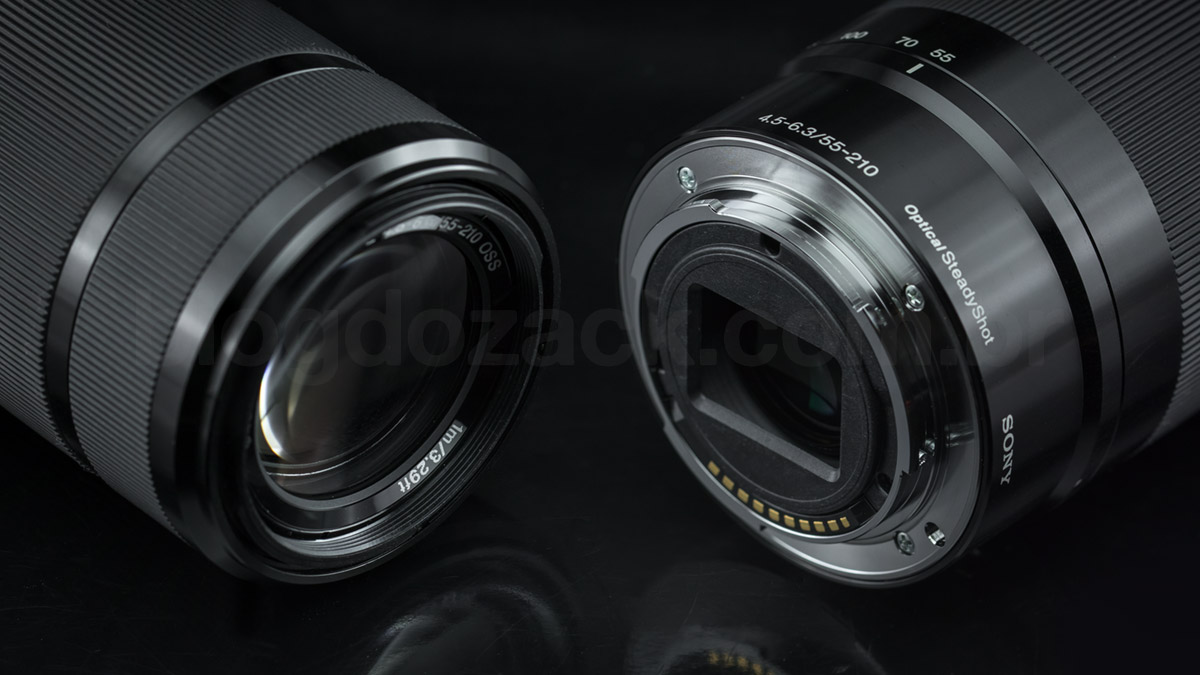
Finally at the front the ø49mm are a damned good idea: compatible with this, this and this lens, or this Sony camera; it’s impossible to ask for better compatibility. But they’re way too small for the telephoto spec, and we’ll soon see how it impacts on the image quality (with strong vignetting). They fix on a plastic thread that itself fits a lens hood thread, allowing both to be used at the same time. At the rear, the metal E-mount is almost standard acros Sony’s line, great to mount/unmount the lens effortlessly. However the lack of a rubber sealing around the mount gives signs of no weather sealing, so there’s no shooting under rainy days with your all-weather A6500. Overall the SEL55210 is an “accessible” lens with something extra, interesting for the notably superior build quality on the APS-C market, smooth operation and easy to use controls; appreciated by amateurs and professionals at this price point. And as we’ll see on the following photographs, the reasonable optical performance is worth the price, easily recommended in spite of its simplest category.

“Bird” at f/6.3 1/400 ISO640 @ 210mm; all photos with the Sony A6500; raw files available at Patreon.
With a 13 elements in 9 groups optical formula, two low-dispersion lenses to reduce chromatic aberration and enhance contrast and a central focusing group adding an aspherical lens for overall frame resolution, the E 55-210mm f/4.5-6.3 OSS was ahead of its time being the first entry-level “standard telephoto zoom” to offer such technologies. Although far from perfect, there’s little to complain about the photographic results: the center frame resolution is good, ranging from “acceptable” to plain bad around the corners, no matter to focal length; its sharpness is on the smoother side, not really delivering this generation’s EXMOR 24MP resolution needs; the chromatic aberrations are indeed kept to a minimum, thanks to the low-dispersion glasses, never seen before at this price point; and the geometric distortions are also low, not really an issue except for some vignetting. Overall the SEL55210 is a good option to always be kept in your backpack.

“Flowers” at f/6.3 1/400 ISO640 @ 210mm.
Wide open the SEL55210 resolution is what I call “fair” at this price point: it won’t win any optical prizes, but it’s hard to take unstable photos with it. Around the center frame the details can be impressive, as long as we don’t shoot at the closest range, that’s at long 100cm (1m) on the 55210 minimum focusing distance. The magnification stands at a 1:4.4 maximum, good to shoot birds and flowers, with good resolution in spite of the poor sharpness, as the contrast drops significantly; we’re pushing the optics to a limit shooting smaller subjects with this zoom lens. However outside of the frame center, near the edges, the wide open SEL55210 just doesn’t work: there’s never a sharp detail, no matter the focal length or the focusing distance, and I can’t recommend it at f/4.5-6.3 for landscapes that demand corner to corner resolution. In such cases, stopping down to f/8-f/11 is mandatory for the best results, that would already be a requirement for the longer depth of field. But for portraits with a centered subject, the SEL55210 works; the files are good enough.

“Bird II” at f/6.3 1/400 ISO500 @ 210mm.
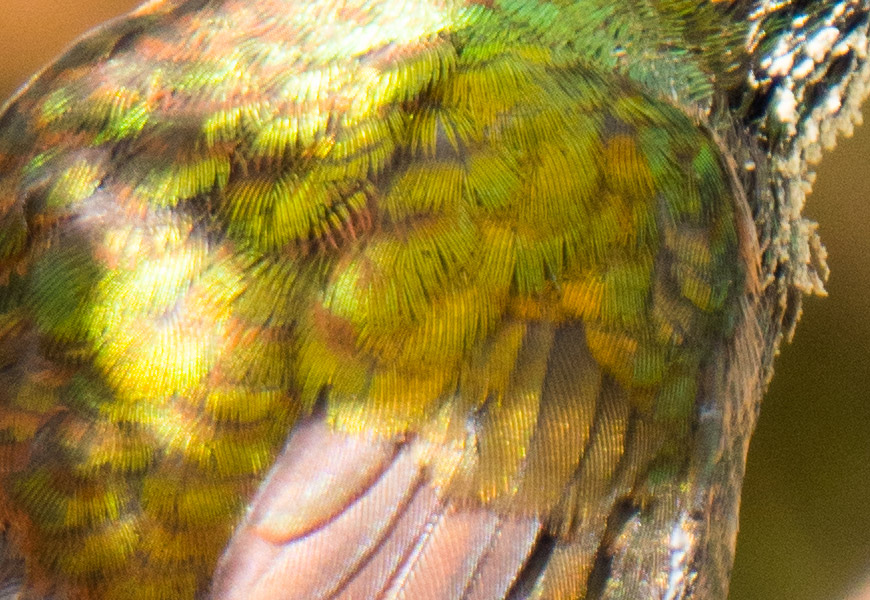
100% crop, although far from perfect, the SEL55210 center resolution is good enough for the price.

100% crop, the frame sharpness drops with the short depth of field, but the plane resolution if good enough.

100% crop, it’s hard to complain about the wide open resolution, despite the lack of sharpness.

100% crop, the details are more than enough in the center frame.
Stopping down is a welcomed idea to enhance the resolution, despite never really delivering prime resolution like some “modern” zooms (above US$1000). With the demanding 24MP EXMOR APS-C Alpha sensor, the photos look coming from a “cheap” lens, just like most low-cost standard-telephoto zooms; far from the top of the line teles. While the 55-210mm works for web output (Facebook, Instagram) and eventually some small prints (A4 and lower), we can’t really use it for serious work, when fine details are important. And that’s the standard on recent APS-C cameras: the new “high density” sensors demand the best lenses, that haven’t really improved that much. So you’ll need the best of the best to fully explore the resolution of your camera, and that’s going to cost you. So forget about pushing the limits of your Sony Alpha with the SEL55210: seriously consider high performance glasses to truly see what’s possible with 24MP.
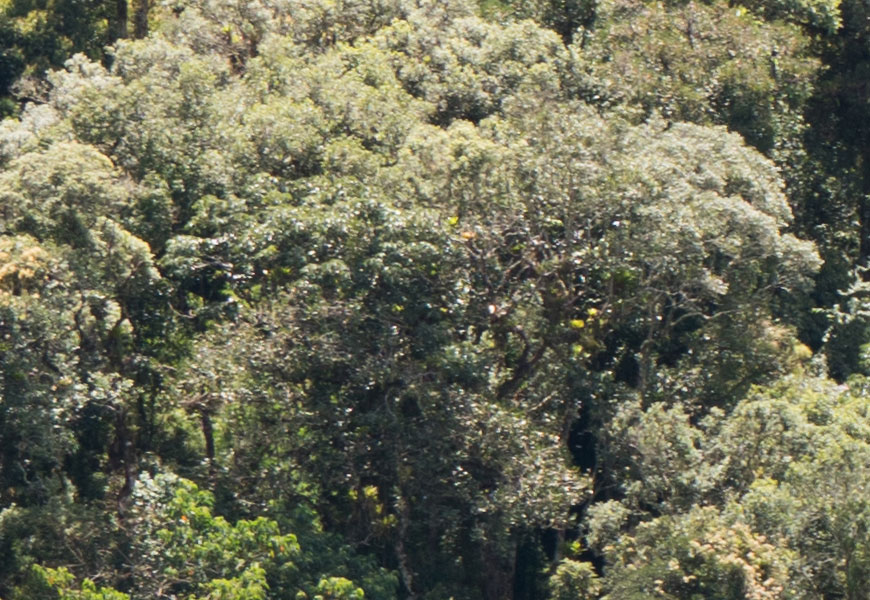
100% crop, even when stopped down, this SEL55210 never delivers 100% sharpness.

“Lâminas” at f/8 1/100 ISO125 @ 55mm.

100% crop, the resolution is barely acceptable at f/8…

100% crop, peaking only at f/10, when the diffraction kicks in.

100% crop, near the frame edges, the resolution is just barely acceptable, even at f/8.
Chromatic aberrations are visible in a curious manner. As the SEL55210 lacks resolution, the axial CA doesn’t show as colored lines surrounding high contrast areas; it happens as smeared purple “tubes”. It’s interesting to see how these aberrations are directly related to high resolution lenses, sometimes as lines (with great optics) or merely tubes (with less than perfect glasses), and the US$348 55-210mm won’t fool you; the optical resolution is low and aberrations indeed look like “cheap optics”. On the other hand the aspherical focusing group does a good job dealing with lateral CA: it’s practically invisible even near the frame corners, perfect to shoot urban landscapes with lots of straight, high contrast lines (like window frames). It’s an advantage of the smaller aperture spec, that doesn’t push the boundaries of the lenses curvature.
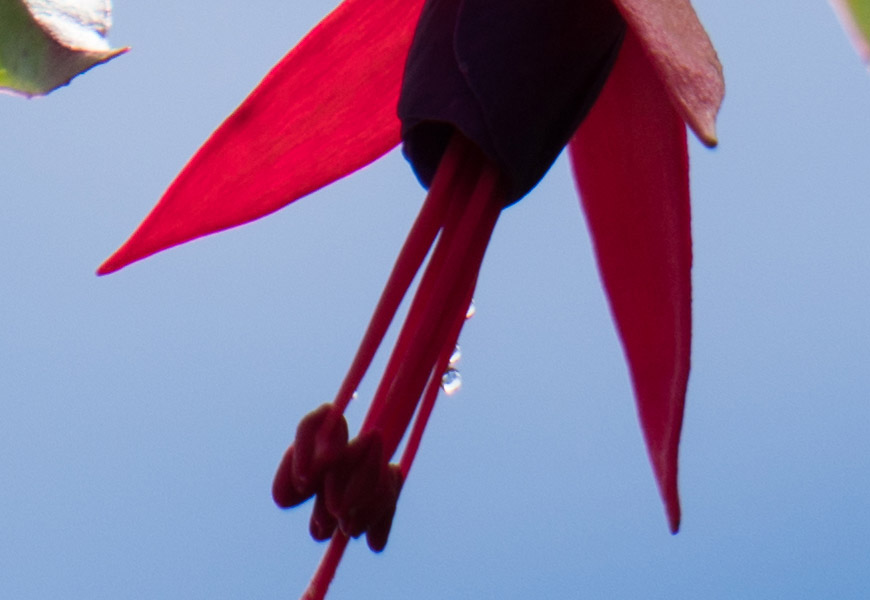
100% crop, notice the purple fringing when backlit.
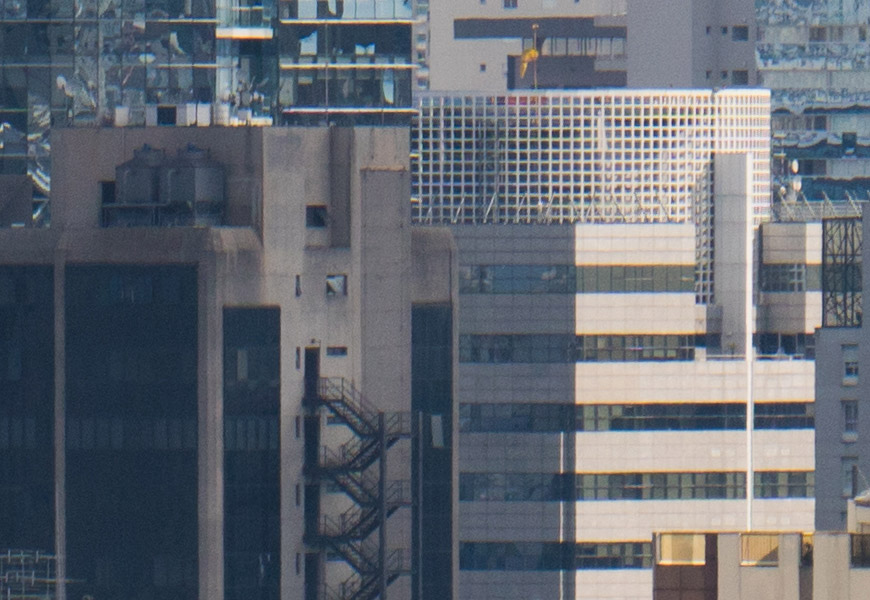
100% crop, no colored lines on window frames.
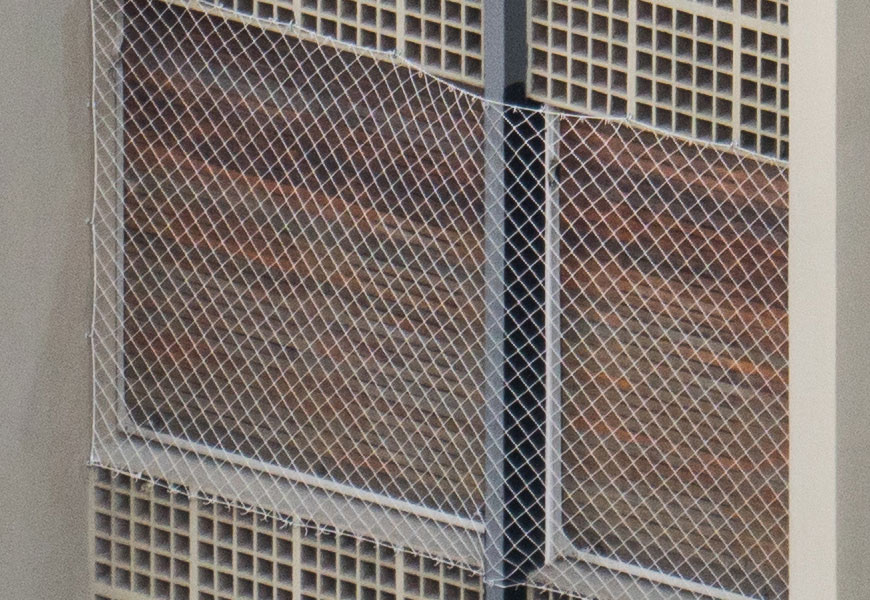
100% crop, great center resolution with no chromatic aberrations.
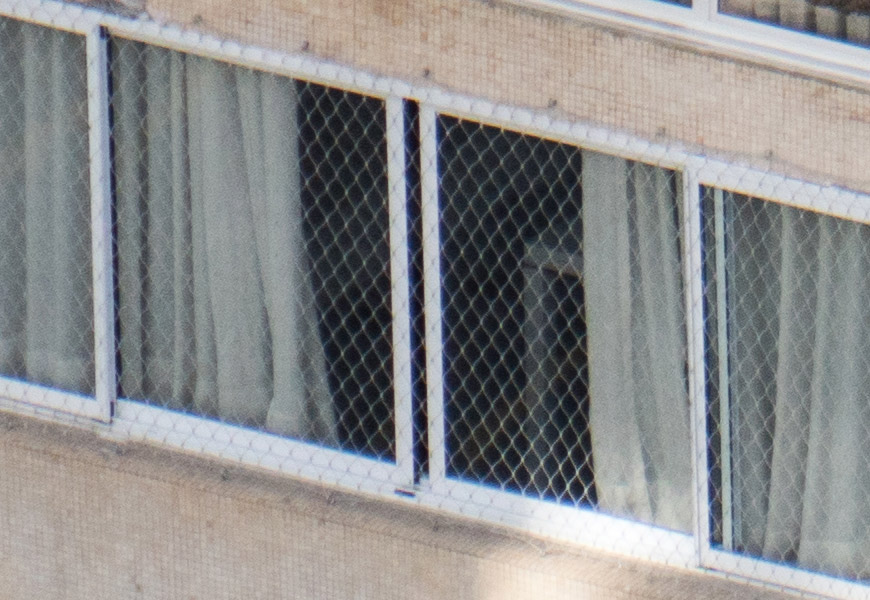
100% crop, despite the lack of lateral CA, the corner resolution is abysmal on this lens.
Finally the colors and bokeh are another surprise. The saturation looks incredibly faithful once you push the raw files in post. On the 4D Focus tests, the cyclists at Paulista Avenue looked “healthy” with the A6300/A6500 EXMOR sensor, that failed to deliver good skin tones with the FE 55mm f/1.8 ZA tested on the Sony A7II. The SEL55210 is also very natural in its green and blue renderings, great for landscapes, flowers and birds; balanced to the same Kelvin value of Canon’s L series. And the bokeh looks as good as it can be: as the focal length is very long, it’s easy to isolate your subject in front of a blurred background, with smooth and colorful lines. Sony was certainly paying attention to the bokeh when it designed this lens, even implementing a rounded 7-blade aperture to keep the background as “organic” as possible, during video and photo captures.
The E 55-210mm f/4.5-6.3 OSS is a lens that tries a lot on the same product, and happily delivers everything. The build quality is best-in-class with a metal finishing (exterior and mount), robust plastic barrels that makes it very light and sturdy, despite the elegant “premium” operation; always a plus on Sony’s APS-C. The zoom operation is buttery smooth and hard to see at this price point, a clear statement to Sony’s dedication with its users. The linear motor AF is always a headline on E-mount lenses, fast and silent, although largely dependent on the camera’s technology and user technique. The stabilizer is impressive when paired with the SteadyShot-ready A6500, great for photos despite failing for video. And the optical design is fair for the price, with good center resolution, smooth bokeh and reasonable color reproduction, no matter the lack of pixel-perfect sharpness; expect longer post-processing sessions in order to extract the best from the SEL55210. With a US$348 price tag this zoom lens fulfills its place on the “APS-C E-mount”, serving as the only telephoto lens you’ll ever need on your kit; before upgrading to high-end prime lenses, that yet don’t exist on Sony’s lineup. While you’re waiting, have fun with this zoom and nice shooting!